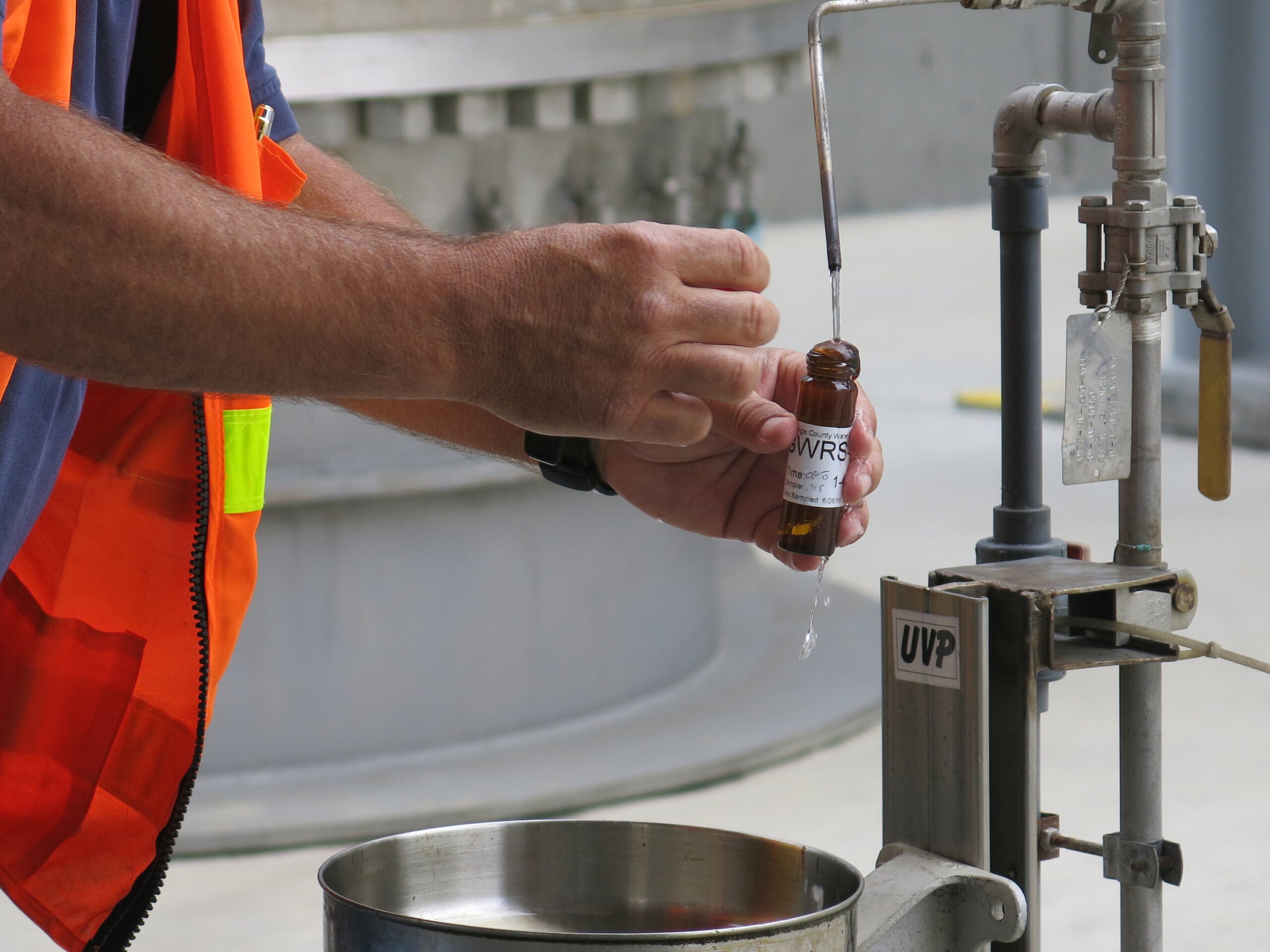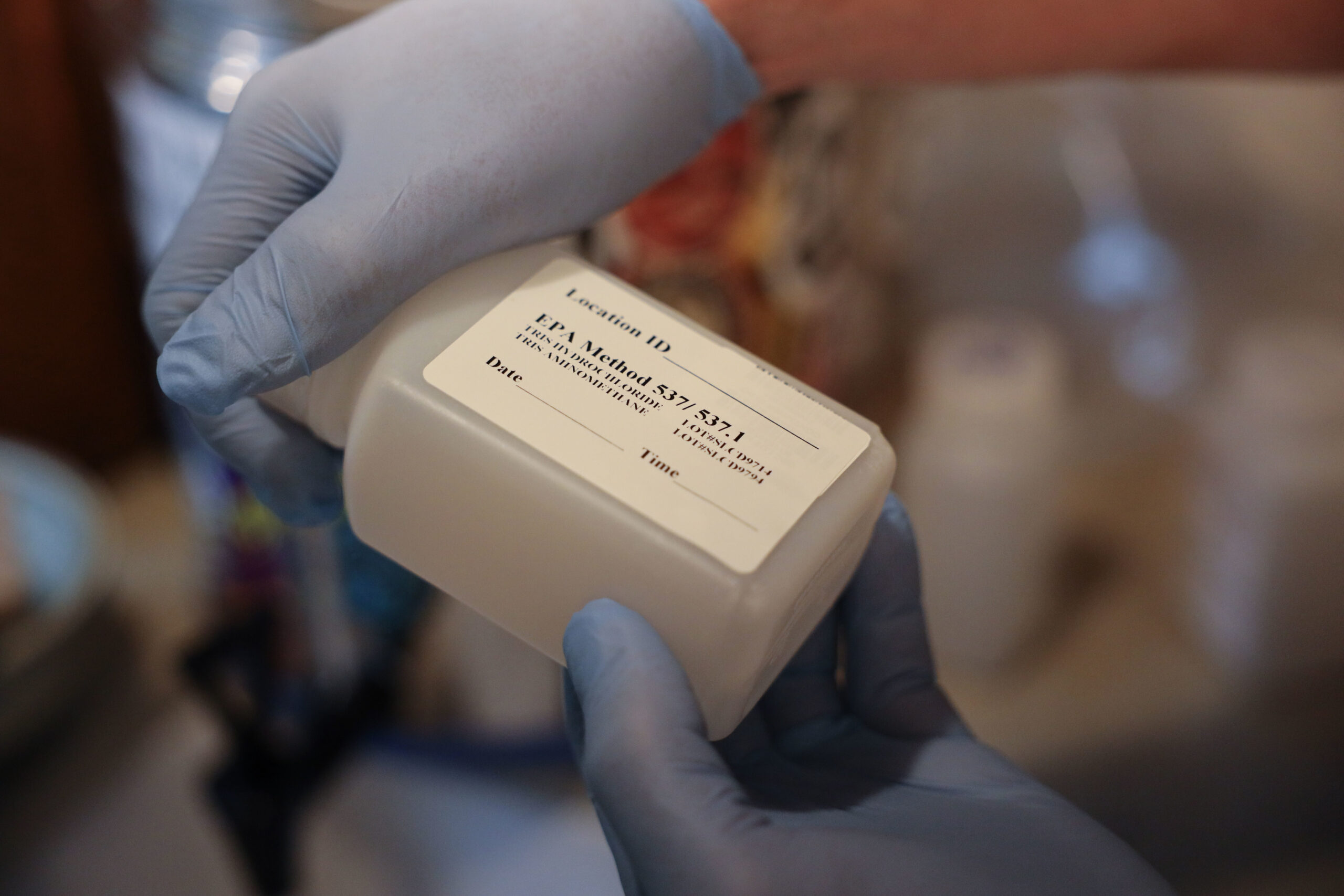Gov. Tony Evers’ administration is proposing new groundwater quality standards for 22 substances that pose a risk to public health, including 16 PFAS chemicals and six pesticides.
Found in everyday products, perfluoroalkyl and polyfluoroalkyl substances, commonly called PFAS, have raised concern because they don’t break down easily in the environment. The so-called “forever chemicals” have been linked to an increased risk of some cancers.
The state Department of Health Services has proposed the new standards after having received a list of 40 substances — including 34 PFAS chemicals — to be assessed as potential health risks from the state Department of Natural Resources in spring of 2019. DHS didn’t recommend standards on 18 of those substances due to limited information on them.
Stay informed on the latest news
Sign up for WPR’s email newsletter.
“These recommendations demonstrate our ongoing commitment to ensuring clean, safe drinking water for Wisconsin residents,” said DHS Deputy Secretary Julie Willems Van Dijk in a statement. “With this essential information in hand, we continue our vital work to protect this precious resource.”
Health officials detailed their recommendations in a 396-page letter to the DNR, describing the justification for each standard. The agency used federal groundwater quality standards when available and scientific research to develop a baseline for each substance.
The work builds on the agency’s previously recommended groundwater standard for the two most common PFAS chemicals, PFOA and PFOS. Last year, health officials recommended a groundwater quality standard of 20 parts per trillion for the two chemicals.
Now, the agency is proposing a combined groundwater standard of 20 parts per trillion for six PFAS chemicals, including PFOA and PFOS. The four additional PFAS substances include N-Ethyl perfluorooctane sulfonamideoethanol (NEtFOSE), N-Ethyl perfluorooctane sulfonamidacetic acid (NEtFOSAA), N-Ethyl perfluorooctane sulfonamide (NEtFOSA), and Perfluorooctane sulfonamide (FOSA).
The substances are a group of chemicals that are found in stain repellents, food packaging and some firefighting foams.
“The recommended standard is based on multiple studies that show NEtFOSE, NEtFOSAA, NEtFOSA, and FOSA breakdown into PFOS in both the body and the environment,” wrote health officials.
Information is limited on the group of chemicals, but research has shown that PFOS is linked to reproductive and development issues among other health issues.
More than two-thirds of Wisconsin residents get their drinking water from groundwater, according to Steve Elmore, the DNR’s director of the Bureau of Drinking Water and Groundwater.
“With these health-based recommendations and levels in hand, we can compare these levels to known PFAS-contaminated areas,” said Elmore. “As we move forward with testing drinking water wells for PFAS, we can know what level is safe or not safe to drink.”
Individual standards proposed for a dozen PFAS chemicals ranged from as low as 30 parts per trillion to as high as 450 parts per billion.
The Los Angeles Times has used the analogy that one part per billion would be like finding a packet of sugar has dissolved in an Olympic-sized swimming pool. One part per trillion would be like finding less than one grain of sugar.
The DNR will initiate the rulemaking process to develop standards based on the recommendations. That process could take several years to complete. The agency is currently in the process of developing drinking water, groundwater and surface water standards for PFOA and PFOS.
The public will have an opportunity to comment on the proposed standards as the rulemaking process moves forward.
Citizens for Safe Water Around Badger petitioned the DNR for drinking water standards for PFAS chemicals. Executive Director Laura Olah said in a statement that the group hasn’t had a chance to review the proposed limits, but they’re pleased with the recommendations from state health officials.
“They will provide much needed health-based guidance for impacted communities like Marinette where dozens of PFAS compounds have been detected in drinking water supplies, and in identifying public water supply wells that are not safe to use,” said Olah.
The DNR has requested state health officials to develop groundwater standards 11 times.
State agriculture officials also submitted several chemicals to the agency for review.
Wisconsin Public Radio, © Copyright 2025, Board of Regents of the University of Wisconsin System and Wisconsin Educational Communications Board.






